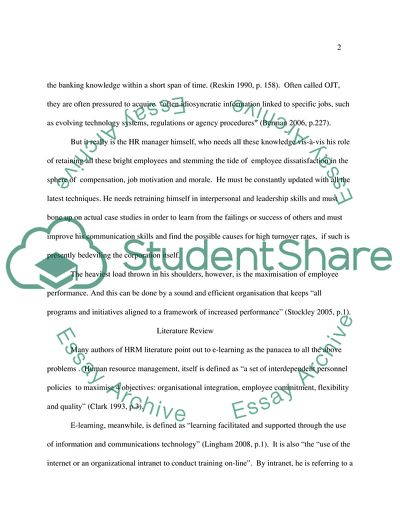Cite this document
(The importance of e-learning as a tool for human resource management.A Coursework, n.d.)
The importance of e-learning as a tool for human resource management.A Coursework. https://studentshare.org/human-resources/1715952-the-importance-of-e-learning-as-a-tool-for-human-resource-managementa-case-study-of-a-bank-in-greececomparing-the-use-of-seminars-and-web-seminarswebinars
The importance of e-learning as a tool for human resource management.A Coursework. https://studentshare.org/human-resources/1715952-the-importance-of-e-learning-as-a-tool-for-human-resource-managementa-case-study-of-a-bank-in-greececomparing-the-use-of-seminars-and-web-seminarswebinars
(The Importance of E-Learning As a Tool for Human Resource management.A Coursework)
The Importance of E-Learning As a Tool for Human Resource management.A Coursework. https://studentshare.org/human-resources/1715952-the-importance-of-e-learning-as-a-tool-for-human-resource-managementa-case-study-of-a-bank-in-greececomparing-the-use-of-seminars-and-web-seminarswebinars.
The Importance of E-Learning As a Tool for Human Resource management.A Coursework. https://studentshare.org/human-resources/1715952-the-importance-of-e-learning-as-a-tool-for-human-resource-managementa-case-study-of-a-bank-in-greececomparing-the-use-of-seminars-and-web-seminarswebinars.
“The Importance of E-Learning As a Tool for Human Resource management.A Coursework”. https://studentshare.org/human-resources/1715952-the-importance-of-e-learning-as-a-tool-for-human-resource-managementa-case-study-of-a-bank-in-greececomparing-the-use-of-seminars-and-web-seminarswebinars.


